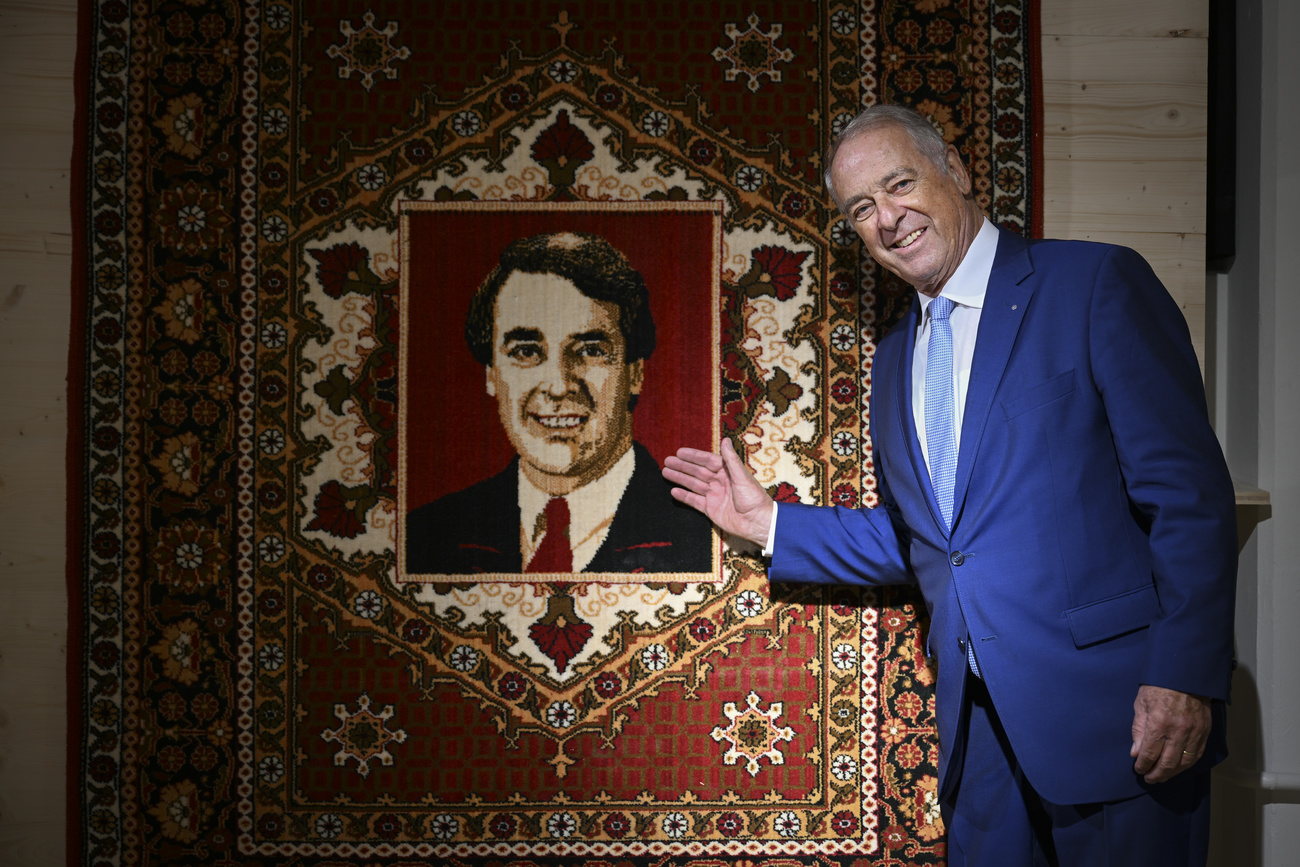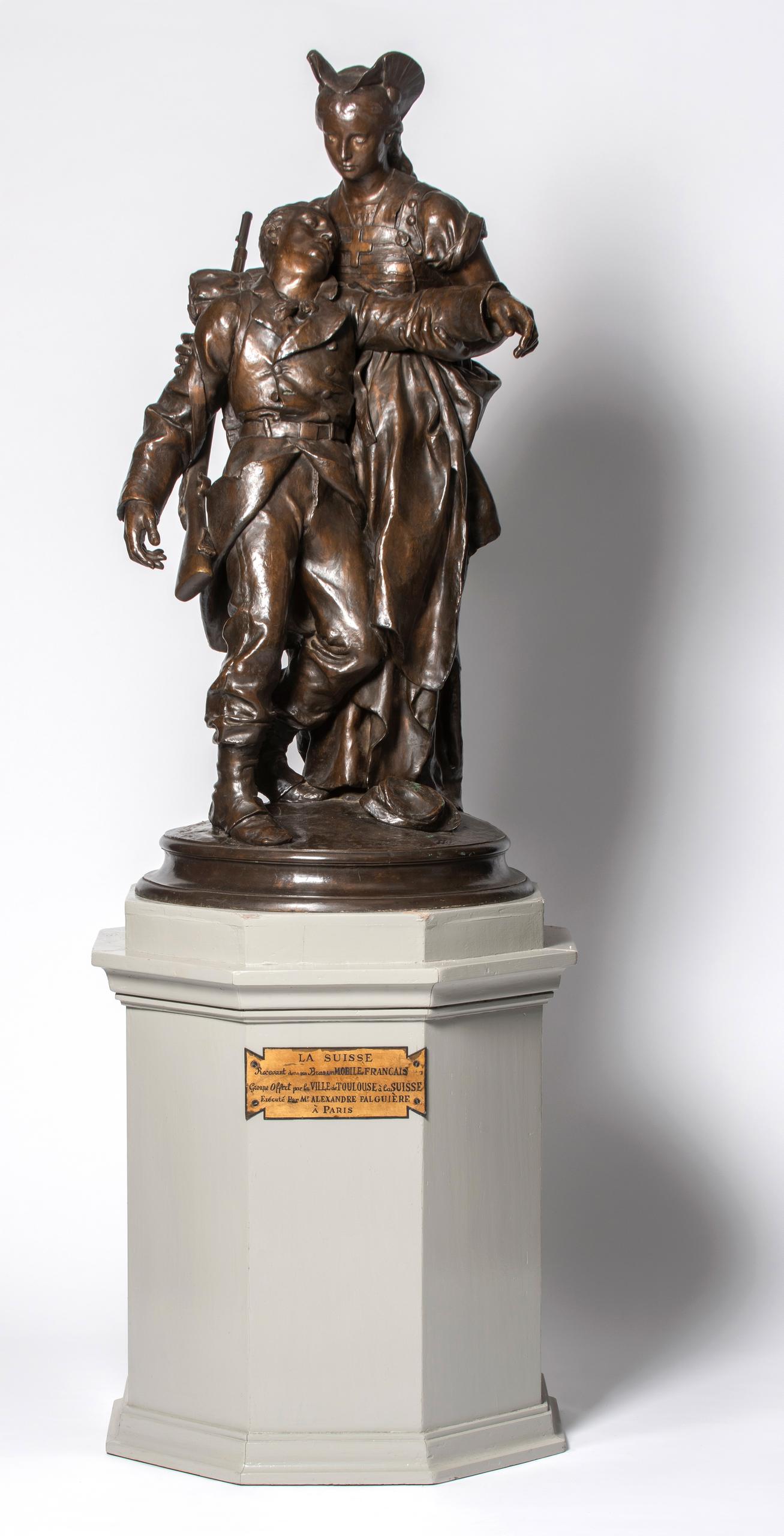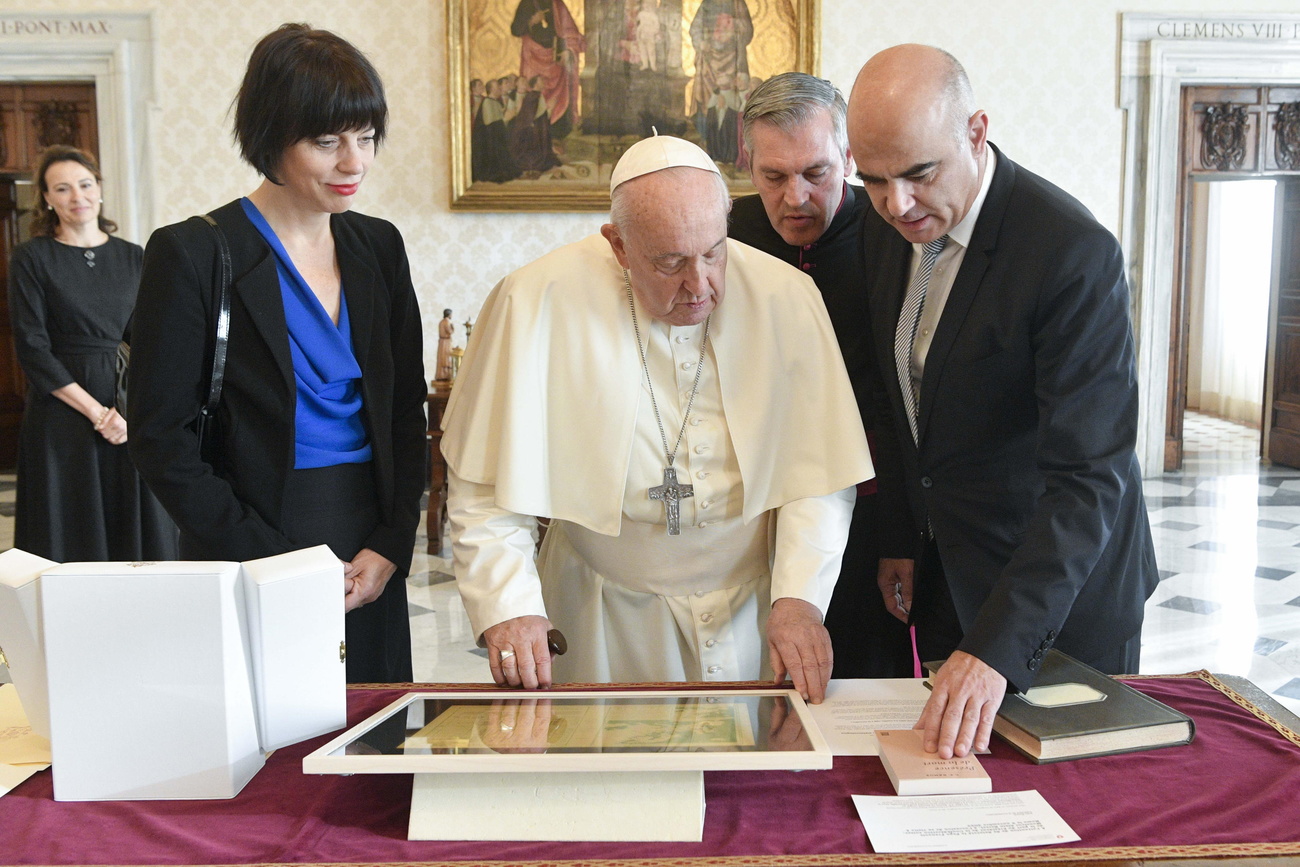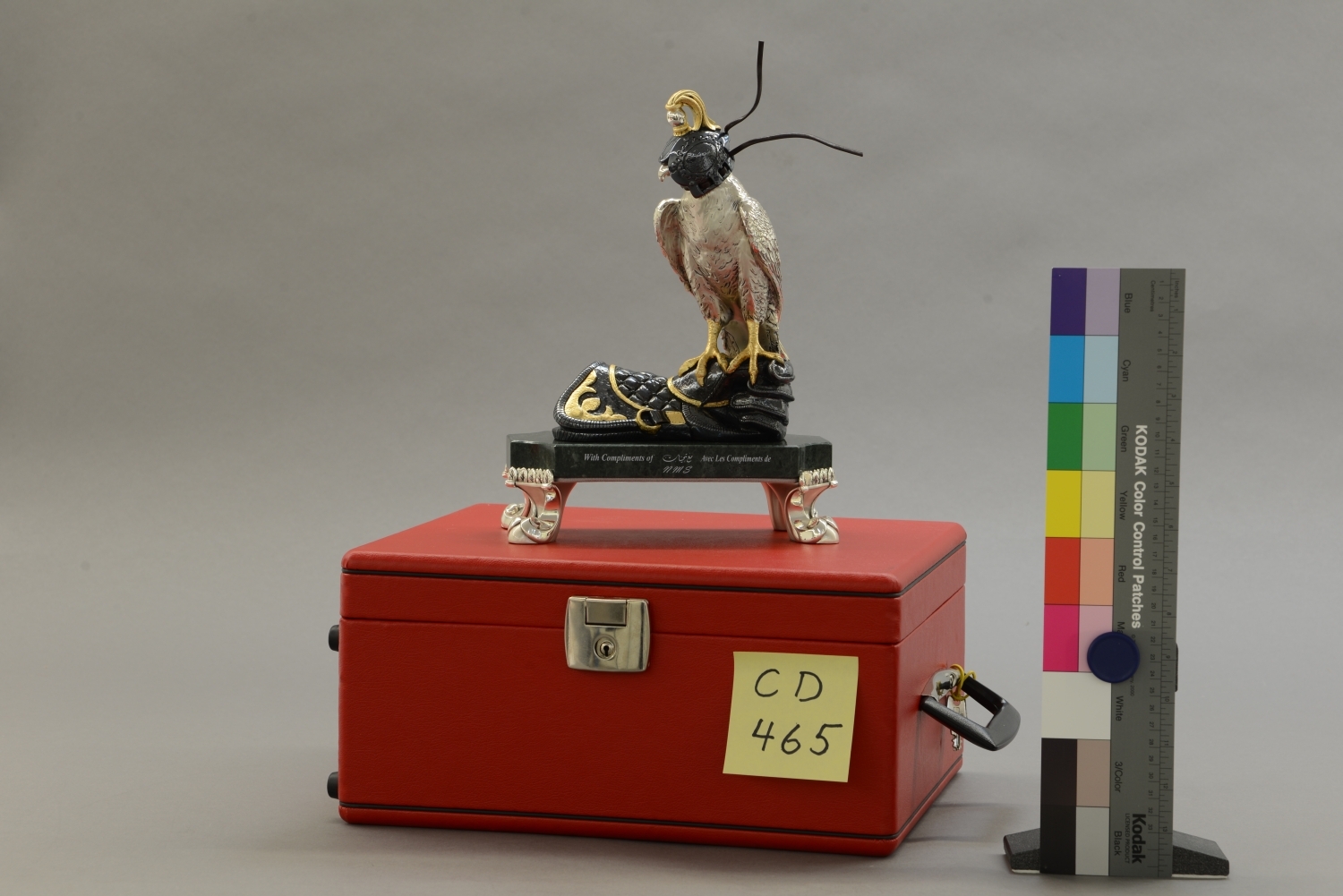
What Switzerland’s trove of official gifts says about diplomacy

Choosing presents is no small feat even for those with the best intentions or a large wallet. Spare a thought, then, for world leaders under constant pressure to offer each other the perfect gift when they meet.
It’s impossible to know who among the staff of the Uzbek President, Islom Karimov, had a stroke of genius in 1993. On the occasion of the World Economic Forum in Davos that year, then-Swiss President Adolf Ogi received a gift from Karimov which, at first glance, looks traditional enough: it’s a large handwoven rug featuring flower and leaf patterns in a vibrant red complemented by rich earth tones. Only at its centre is a portrait of Ogi himself, dressed in a dark suit jacket and red tie to match the rest of the rug.
“It’s one of [Ogi’s] most precious objects,” says art historian Andreas Münch. It’s also a hit on the exhibition circuit in Switzerland, having most recently appeared at a museum in the retired politician’s hometown in the Bernese Alps.
When not being admired by members of the public, the rug has a more modest dwelling: the basement of a building of the culture ministry in Bern that houses the Federal Art Collection, headed by Münch. Here the temperature, humidity level and lighting are optimised to store the famous Uzbek rug and other diplomatic gifts that Swiss cabinet ministers, ambassadors and other civil servants have received since the creation of the Confederation in 1848.
When Münch took up his post in 2012, the items collected over time were in a state of disarray, left in storage with little information on their provenance. “I said to myself, either we throw everything away or we take the work seriously and do some research on their origin,” he explains. “So that’s what we’ve done.”
Gifts vary in value and artistic merit
Officially, federal civil servants, including cabinet ministers, cannot accept gifts worth more than CHF200 ($230). But many do as a diplomatic courtesy and turn them over to their managers or the Federal Council, Switzerland’s executive body. Those that don’t go on display in a government building or museum end up in the collection. Today the database of diplomatic gifts contains close to 600 objects that vary greatly in value, artistic merit and symbolism.
A few would be of interest to a gallery – like three exquisite silver vases that a University of Zurich specialist confirmed were the work of an early 20th-century Japanese silversmith, Tsukada Shukyo, also known as Shin’yusai. The artist was most famous for his highly prized samurai swords. The vases, which showcase precise handiwork, most likely came from the imperial court, says Münch.

But like many older objects in the collection, little is known about the circumstances in which Switzerland received them. These days Münch and his team insist on full disclosure on the items arriving in the depot.
What’s uncontested is the thinking behind diplomatic gift exchanges. “Most objects say something about the relationship [between the countries], the donor and their intentions,” says Münch.
Presidential gift exchanges a serious affair
Gift exchanges are common when a Swiss president meets another world leader, says Susan Misicka, a spokesperson for the Federal Chancellery. Deliberations on this are taken seriously.
“Ahead of the meeting, protocol agents discuss the items and their value to ensure a suitable balance,” Misicka explains in an email. “Most of the time, a gift is chosen based on the specific recipient. The president’s personal advisors are responsible for proposing gifts.”
Gifts presented by the Swiss side range in value from CHF50 to several thousand francs and must be of Swiss origin. “They typically represent Swiss excellence and/or precision,” says Misicka, who cites clocks, music boxes, Swiss Army knives, chocolate, wine, and even skis and artwork as examples.
Occasionally, gifts are chosen as a commentary on the issues of the day. On a recent visit to the Vatican, Swiss President Alain Berset presentedExternal link Pope Francis with the novel Présence de la mort (The Presence of Death) by Swiss author Charles-Ferdinand Ramuz. Written in 1922, it imagines a world crumbling under global warming.

For good measure, Berset threw in a copy of the weather forecast for Geneva for July 29, 1921, date when Switzerland experienced its highest recorded temperature at the time (38.9°C) and the inspiration for Ramuz’s novel.
Misicka is cagey about revealing what gift, if any, French President Emmanuel Macron received during a recent state visit to Switzerland or whether Berset offered one to Ukrainian President Volodymyr Zelensky when he travelled to Kyiv in November. The government, it seems, does not normally disclose this information.
Wild animals as diplomatic gifts
Some gifts, however, inevitably become the talk of the town. During the first state visit to Switzerland by a Russian president in 2009, Dmitry Medvedev’s delegation offered two bear cubs, Misha and Masha, to the capital city Bern, which has a long association with bears. A bear forest at the Bern zoo was created to accommodate them.

But the well-intentioned gift took a tragic turn. Having been hand-raised in Siberia, the bears became reliant on each other and proved incapable of parenting once they had two cubs of their own in 2014. The male killed one of its offspring in front of horrified zoo visitors; zoo staff put down the second cub a few days later to prevent further suffering.
Wild animals – not always of the live variety – along with weapons have a long tradition as diplomatic gifts dating back to Antiquity, says Münch. The Federal Art Collection contains at least two models of a bald eagle, the national bird of the United States and a symbol of power and authority. A more delicate model, that of a falcon with golden feet from Kuwait, comes complete with a removable cap normally used to keep the bird of prey calm.

“Falcons are a very important part of Arabic culture,” says Münch. “With this gift, you’re not only saying something about where you come from but also transmitting your wishes that the strength of this animal will pass on to the [receiver].”
Likewise, weapons, such as rifles and swords (of the decorative kind), symbolise strength but also self-defence, says the art historian.
Soon Münch and his team will head to Berset’s office as he steps down from cabinet at the end of the year. Their task: to empty the room of gifts the outgoing interior minister has amassed during his 12-year tenure and haul them into the bowels of the Federal Art Collection. Münch has yet to hear if any one-of-a-kind Uzbek rug awaits.
Edited by Virginie Mangin

In compliance with the JTI standards
More: SWI swissinfo.ch certified by the Journalism Trust Initiative































You can find an overview of ongoing debates with our journalists here . Please join us!
If you want to start a conversation about a topic raised in this article or want to report factual errors, email us at english@swissinfo.ch.